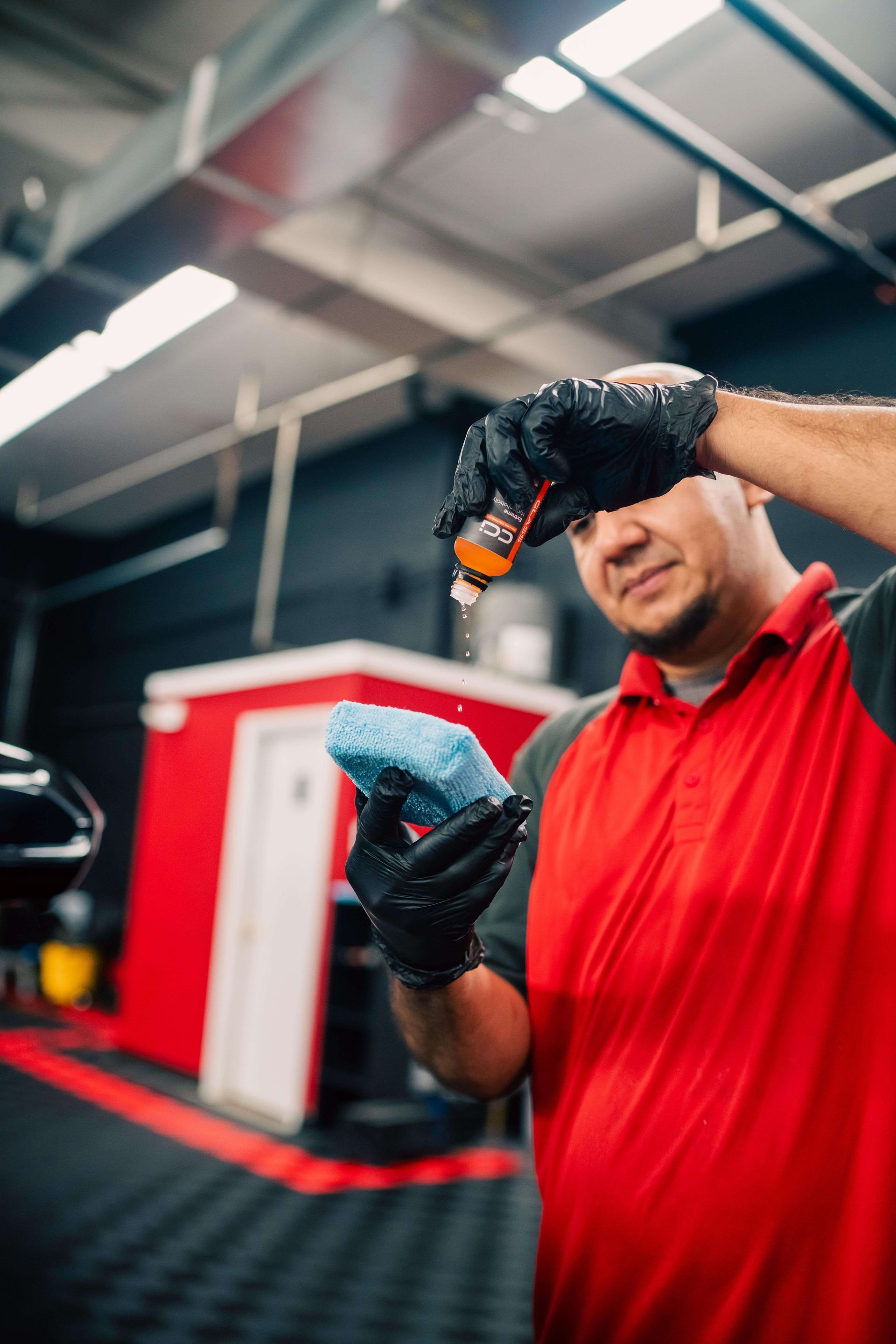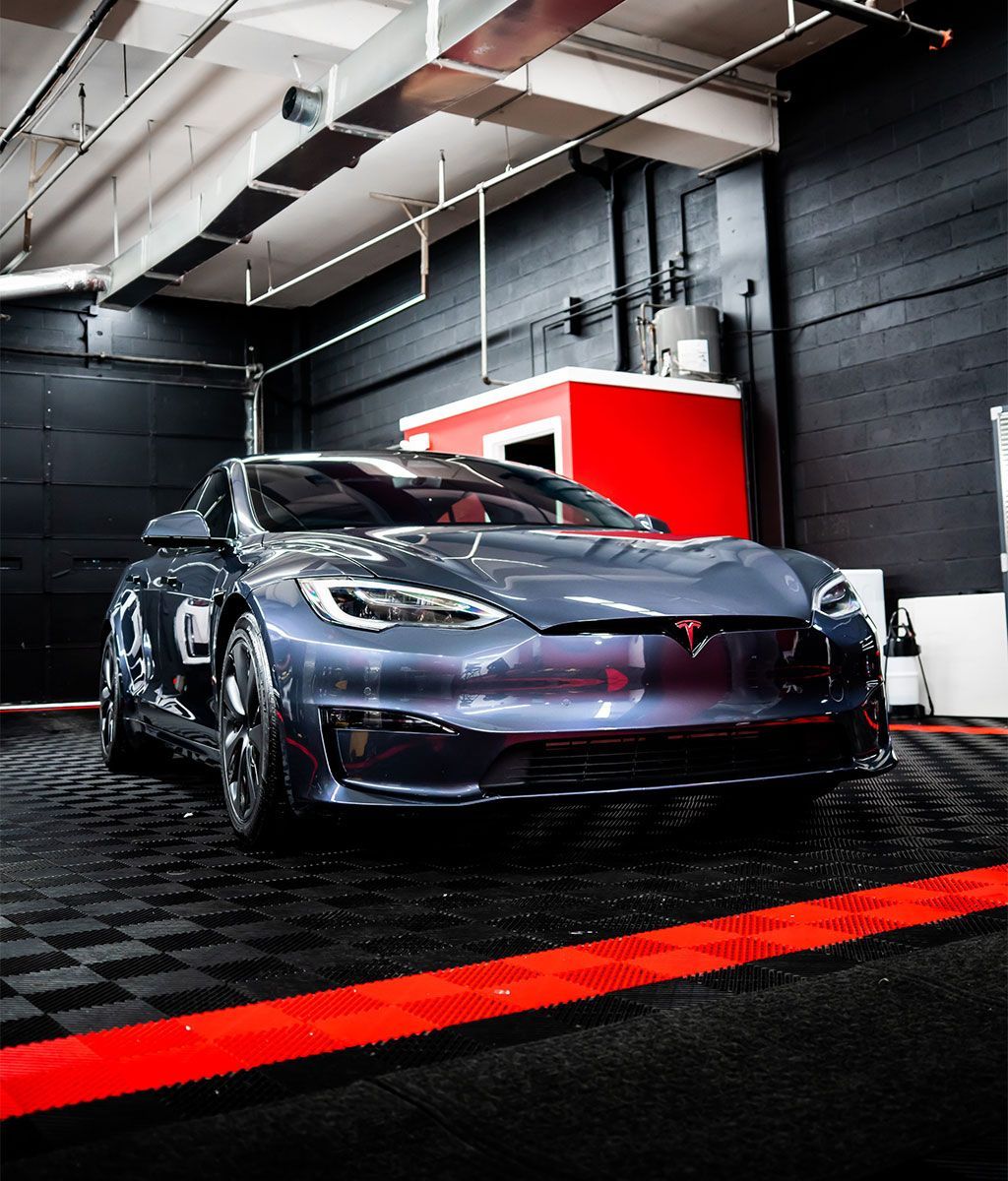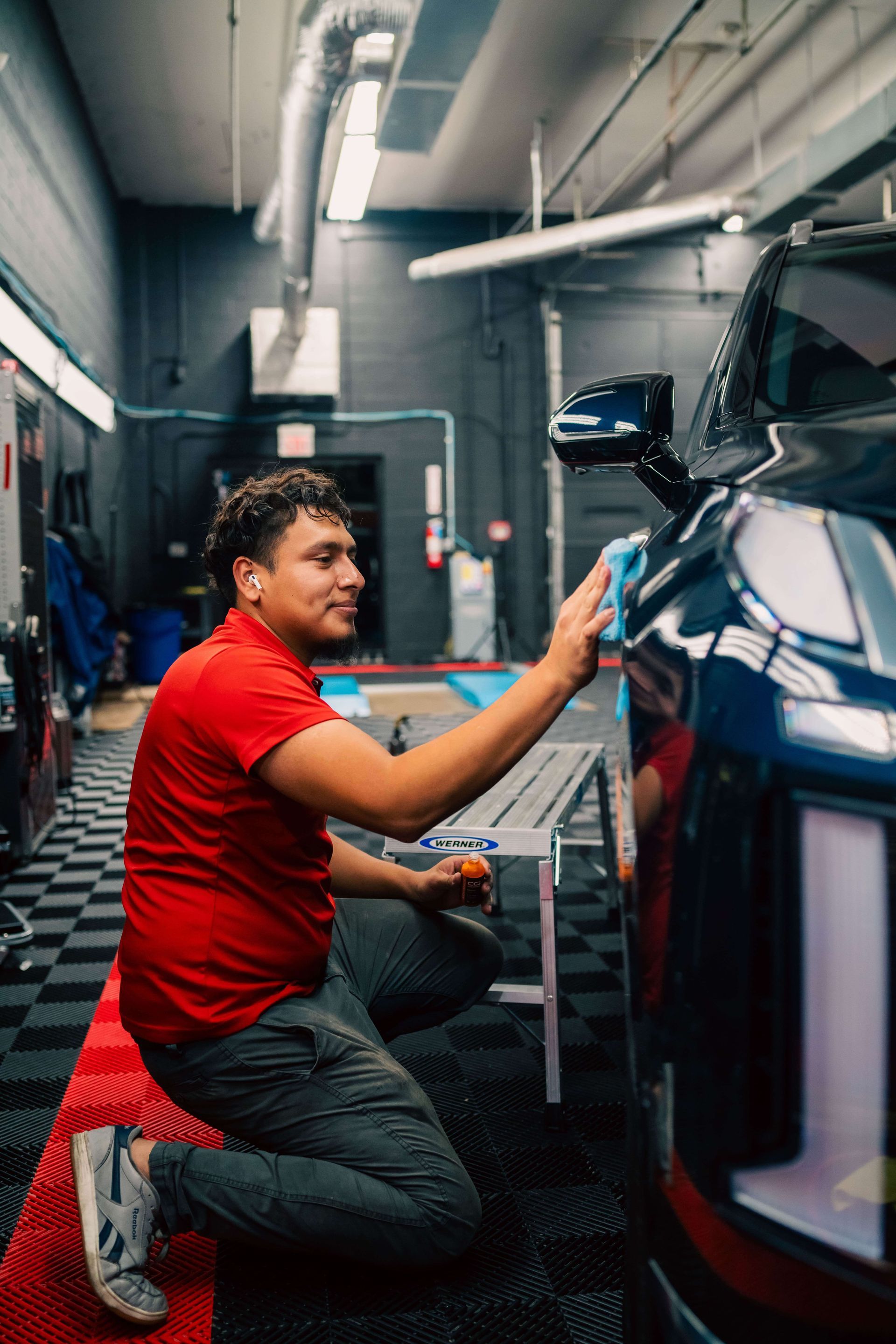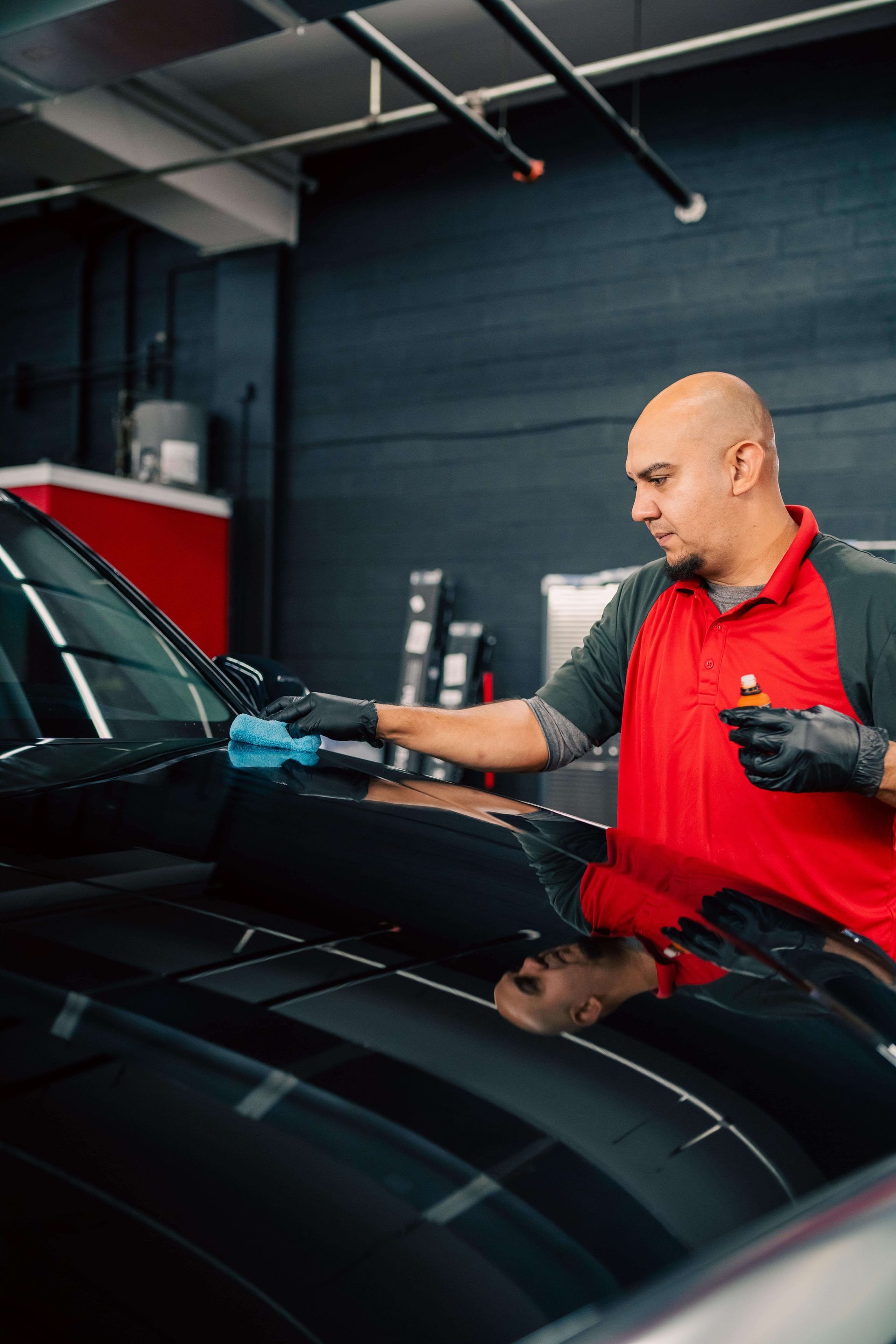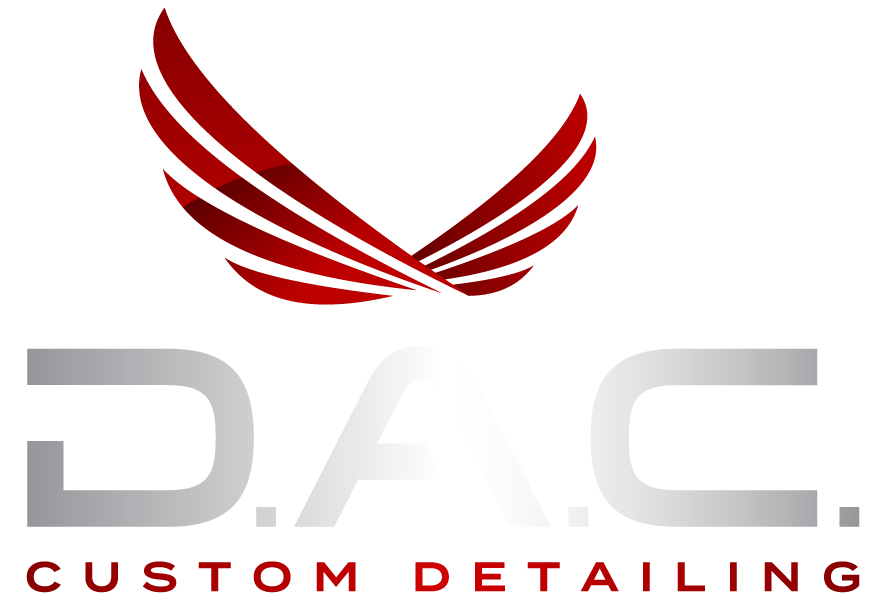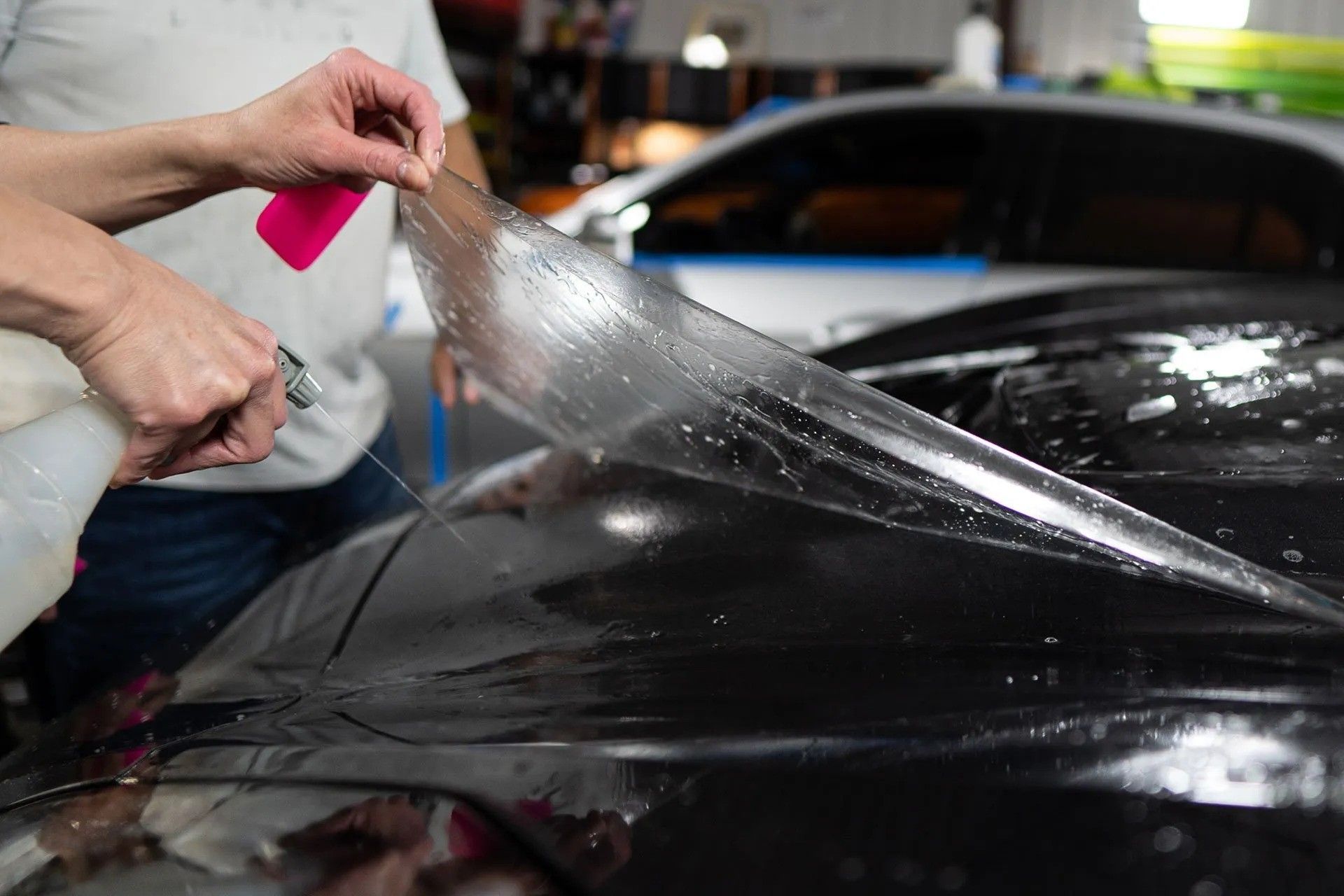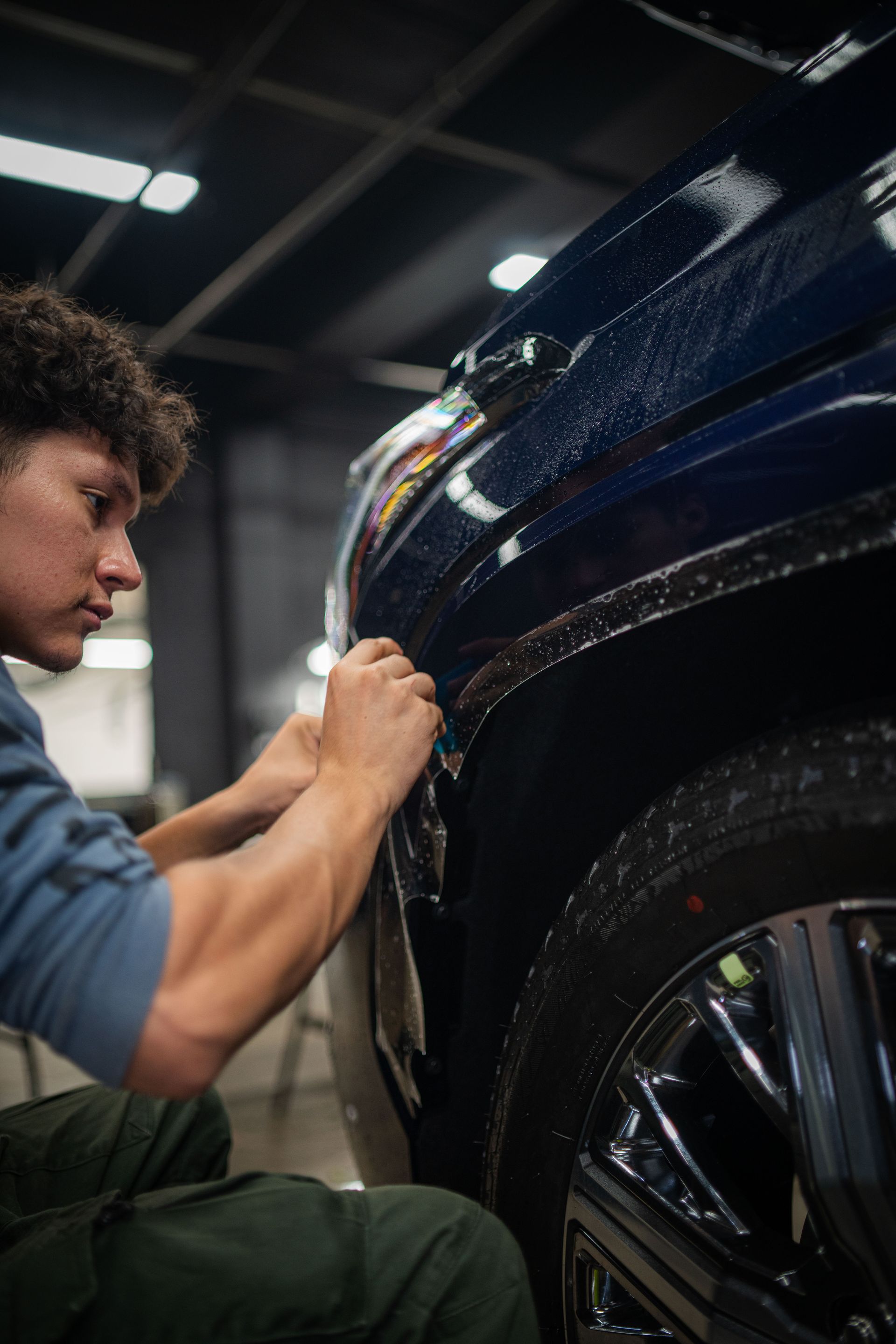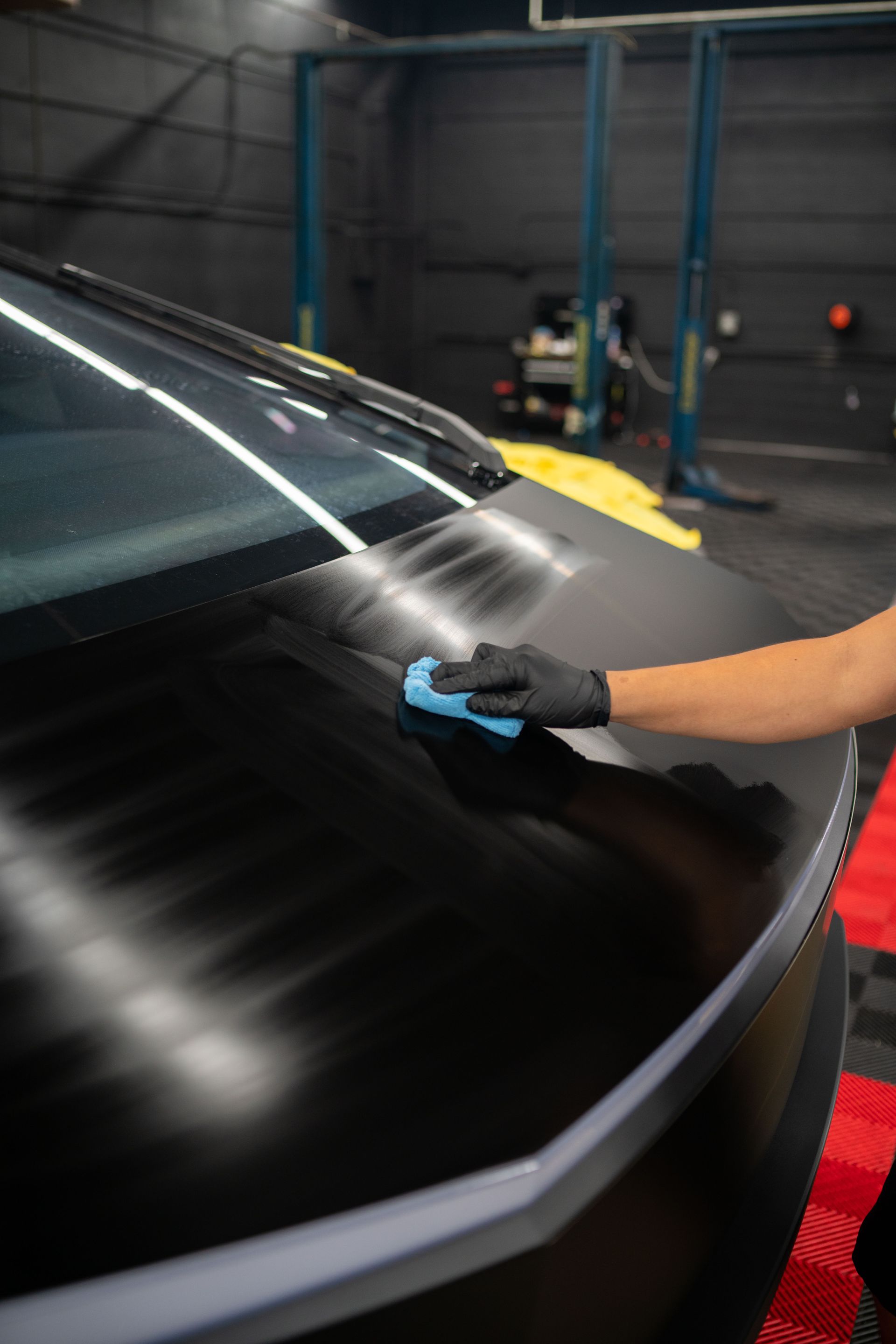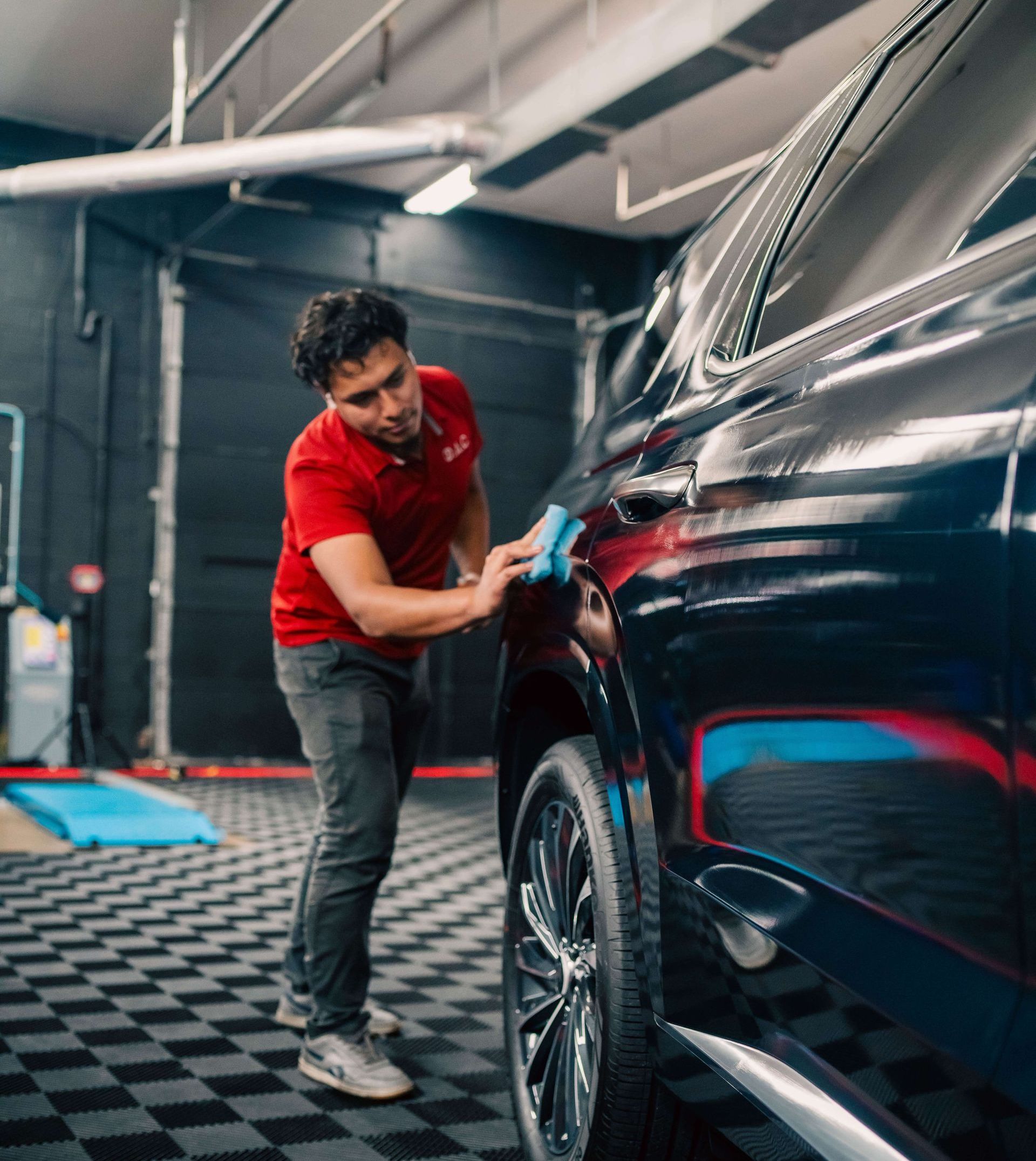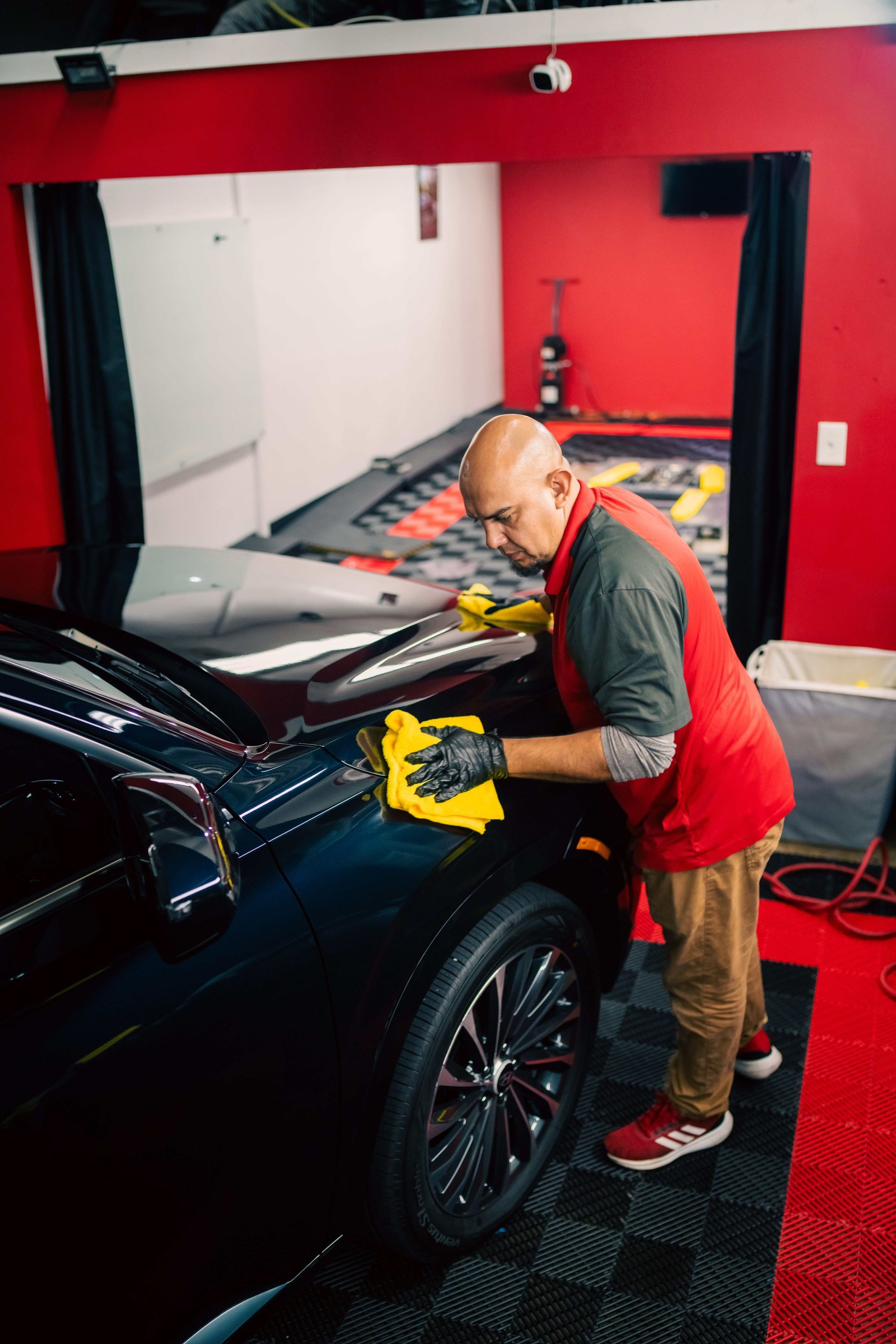REVIVE, PROTECT, MAINTAIN
Every car enthusiast knows the pain of seeing their cherished vehicle’s paint job slowly degrade under relentless weather conditions. UV rays cause fading, winter grime leads to rust, and road salt etches away at every journey’s end. These harsh elements can make even the most meticulous car care routines feel like an uphill battle.
Paint protection film (PPF) acts as a transparent barrier that protects your vehicle's exterior from harsh weather conditions, including UV rays, rain, snow, and road debris. By absorbing impacts and resisting environmental damages such as yellowing and peeling, high-quality paint protection film enhances the longevity and appearance of your car while keeping it looking new for years to come.
Protective Barrier of Paint Protection Film
A paint protection film serves not just as a superficial layer over your car’s paintjob but as a robust defensive barrier designed to withstand the trials of daily driving. This film is thin and transparent but remarkably strong, acting like a shield that absorbs the brunt of harsh environmental factors. For instance, the urethane material offers excellent flexibility and ensures that it can adapt to different surfaces and contours of your vehicle while providing maximum coverage.
Consider road debris such as gravel and small stones that could potentially cause annoying dings and scratches on your car's surface. A paint protection film effectively mitigates this risk by absorbing the impact before it reaches the paint underneath. It's not merely about aesthetics; it's about preserving the structure and value of your vehicle. The durability of paint protection film shines, especially in extreme weather conditions. For example, during winter months when road salt becomes prevalent, this protective film prevents corrosive substances from reaching the paint, which can hasten deterioration if left unchecked.
Additionally, the self-healing feature of many modern paint protection films is truly remarkable. Tiny scratches or swirl marks can disappear with just a little exposure to heat from sunlight or a warm engine. Imagine it: you pull up from a long drive only to notice a scuff mark on your hood, but give it some time in the sun, and like magic, it's gone! This characteristic not only enhances your car’s appearance but also means fewer trips to detailers for minor blemishes. Understanding how paint protection film functions as a protective barrier sets the stage for exploring its role in defending against another common threat—scratches and impacts that can mar your vehicle's finish.
How PPF Prevents Scratches and Impacts
A paint protection film acts as a formidable shield for your car's surface, absorbing the impact from flying debris, minor accidents, and everyday wear and tear. The film’s unique composition allows it to be flexible enough to handle sudden jolts while remaining tough against harsh environmental factors. Just imagine driving down a gravel road or alongside other vehicles during rush hour; without a paint protection film, even the smallest stone kicked up could leave a dent or scratch your paint.
The magic lies in its ability to absorb approximately the impact energy from small projectiles, like pebbles or tiny rocks. This characteristic not only protects the paint beneath but prolongs the overall lifespan of your vehicle's exterior. When these small items strike the paint protection film, rather than chipping away at your vehicle’s finish, the film absorbs the energy of the impact, much like a cushioned barrier protecting you from an unexpected fall.
Additionally, consider the aesthetic benefits. A car with a well-maintained exterior isn't just about looks—it's about value retention. Any scratches or damages can contribute significantly to depreciation over time. Just think about how you feel when you see a shiny vehicle versus one marked with countless blemishes; that difference translates into potential price drops for resale value. Investing in a paint protection film essentially keeps your vehicle looking brand new longer, which is especially crucial if you plan on selling or trading it someday.
The installation of a paint protection film also leads to fewer trips to the body shop and less money spent on repairs incurred from chips and scratches. With proper maintenance—which is often as simple as routine cleaning—this protective film can last from three to seven years. For extreme environments or heavy use cases like off-road adventures, higher-quality films may offer added durability, thus extending protection. Unlike ceramic coatings, which may chip or degrade over time without recourse, a paint protection film’s ability to heal itself ensures that minor abrasions are minimally seen to the naked eye.
Installing PPF on Your Car
The process of installing paint protection film can seem daunting, but breaking it down into manageable steps makes it much less intimidating.
- Thoroughly Wash and Decontaminate the Car: Start by giving the vehicle a deep clean using high-quality car soap to remove all dirt, grime, and surface contaminants. It's essential to ensure the car is spotless, as any debris left on the surface can cause imperfections or bubbles under the film. Consider using a clay bar or a decontaminating spray to further remove any embedded particles, such as tar, iron, or industrial fallout.
- Inspect the Paint Surface: Before applying the film, carefully examine the car’s paint for any scratches, swirl marks, or imperfections. If you notice any defects, it’s important to correct them with paint correction techniques, like buffing or polishing, to ensure a smooth, flawless surface. This step is crucial, as any imperfections left on the paint will be trapped under the film and may become more noticeable.
- Prepare the Paint Protection Film: Depending on your vehicle’s make and model, you may need to cut the paint protection film to match the specific panels. Many installers use pre-cut templates that are custom-designed for different vehicles to ensure an exact fit. Double-check that the film pieces match the areas you’re working on before proceeding to avoid errors in application.
- Wet the Surface and Film: Before applying the film, spray a soapy water solution generously on the car’s surface and the adhesive side of the film. This lubrication allows the film to be repositioned easily on the panel without sticking right away. The solution also helps prevent bubbles from forming under the film during application.
- Align and Position the Film: With the surface still wet, gently place the paint protection film onto the desired area of the car. Adjust and align the film to match the edges and curves of the panel. This step requires patience and precision to ensure that the paint protection film covers the entire area without misalignment or wrinkles.
- Squeegee Out Bubbles and Excess Solution: Once the film is positioned correctly, use a soft squeegee to smooth out the film. Start from the center and work your way outward, pushing any trapped air bubbles and excess solution toward the edges. This process ensures a smooth, tight bond between the film and the car’s surface, leaving no air pockets or wrinkles behind.
- Heat Set the Film: After the film is in place, a heat gun is used to help the film conform to the car's curves and contours. The heat softens the material, making it more flexible and easier to stretch over complex shapes, such as bumpers and mirrors. This step is especially important for areas with sharp angles or deep recesses.
- Trim and Tuck Edges: Once the film is securely adhered to the vehicle, use a sharp blade to carefully trim any excess film. Be sure to cut along the edges of the panel to avoid leaving visible seams. Tuck any remaining edges under the panel edges or trim lines to create a seamless finish that looks natural and professionally done.
- Final Inspection: After completing the installation, thoroughly inspect the film for any imperfections, such as bubbles, misalignment, or areas where the film isn’t adhering properly. If necessary, re-squeegee or apply heat to problematic areas to ensure a perfect finish. Double-check the edges to make sure they’re securely tucked and trimmed.
- Allow the Film to Cure: After the installation is complete, the paint protection film needs time to fully cure and bond to the surface. Avoid washing the car or exposing it to harsh conditions like extreme heat or rain for 24-48 hours. During this time, the film will settle into place, achieving maximum durability and protection for the paint.
Long-Term Advantages of PPF
The long-term benefits of having a paint protection film on your car extend beyond mere aesthetics.
- Increased Resale Value: One significant advantage is increased resale value. Vehicles with a paint protection film applied often retain a higher resale value because the protective layer prevents paint damage from harsh weather, road debris, and UV rays. A vehicle that maintains its exterior condition stands out in the market, allowing it to fetch a more attractive price. Cars with well-maintained exteriors can sell for 10–15% more compared to their counterparts that exhibit visible paint damage. That could mean considerable profit when you decide to sell or trade-in your vehicle.
- Ease of Cleaning: Another notable advantage is the ease of cleaning that comes with PPF treatment. Cars treated with paint protection film are significantly easier to clean because the film repels water and smudge. This means that dirt and debris are less likely to stick to the surface, allowing for a quicker wash—whether at home or at a car wash. Imagine spending less time scrubbing your vehicle and more time enjoying the ride. Moreover, many users report that routine cleaning takes half the time since they don’t have to deal with stubborn grime that otherwise would settle into exposed paint.
- Self-Healing Properties: High-quality paint protection films often feature self-healing properties. This means minor scratches and swirl marks can become less visible as they “heal” when exposed to heat. Essentially, maintaining an immaculate appearance can be much simpler than expected; a little sunshine can minimize surface imperfections almost magically.
When considering PPF, it's not just about present benefits but also how it prolongs the longevity of your car’s exterior finish. Protecting your investment today ensures its beauty continues into the future. With an overall lower chance of permanent damage due to environmental factors, your vehicle remains vibrant for years, potentially avoiding costly repaint jobs or repairs down the line!
Selecting the Ideal Paint Protection Film
The market is flooded with various brands and types of paint protection film, making it essential to know what to look for when selecting the ideal one for your vehicle. This isn't just about aesthetics; the right film can protect your investment from scratches, chips, and environmental damage.
- Thickness: Thickness plays a pivotal role in the type of protection your car receives. A thicker paint protection film typically provides greater durability, absorbing impacts better and resisting abrasions. However, keep in mind that these thicker films may be more challenging to apply than their thinner counterparts. This is particularly important if you're planning to install the film yourself; a thinner product may offer an easier application process but could compromise on protection.
- Clarity: Imagine applying a protective layer over your sleek, shiny car only for it to look hazy or distorted. High optical clarity is crucial; therefore, seek films that maintain the original appearance while providing robust protection. A quality paint protection film should be nearly invisible once applied and should enhance the car's finish rather than detract from it.
- Warranty: A long warranty often indicates that the manufacturer trusts its product's durability and performance. Generally, warranties can range from five years to a lifetime, so it's worth investing in a brand that stands by its products. Trusted paint protection film companies can provide peace of mind knowing they offer excellent performance along with strong warranties.
- Professional Advice: Consulting with professional installers or user reviews can serve as a valuable resource in ensuring you're getting the best product tailored to your needs. Personal experiences shared by satisfied customers can guide you in making an informed choice. Likewise, professional input often reveals insights into specific characteristics of certain brands that may not be available elsewhere.
Through careful consideration of thickness, clarity, warranty options, and professional advice, you're well on your way to selecting the best paint protection film that will shield your vehicle against harsh weather conditions while maintaining its pristine look!
Top-Tier Paint Protection Film Service in Alexandria, VA
For unmatched paint protection film services in Alexandria, VA, trust D.A.C. Custom Detailing to safeguard your vehicle with precision and care. Offering top-tier PPF installations, D.A.C. Custom Detailing ensures your car is protected from road debris, environmental damage, and everyday wear, all while maintaining its pristine look. Our expert team utilizes advanced techniques to deliver seamless coverage that enhances durability without altering the car's original finish. Secure long-lasting protection for your vehicle and experience the superior results D.A.C. Custom Detailing has to offer today. Call us at (703) 298-1864 to get started!
Share with friends
